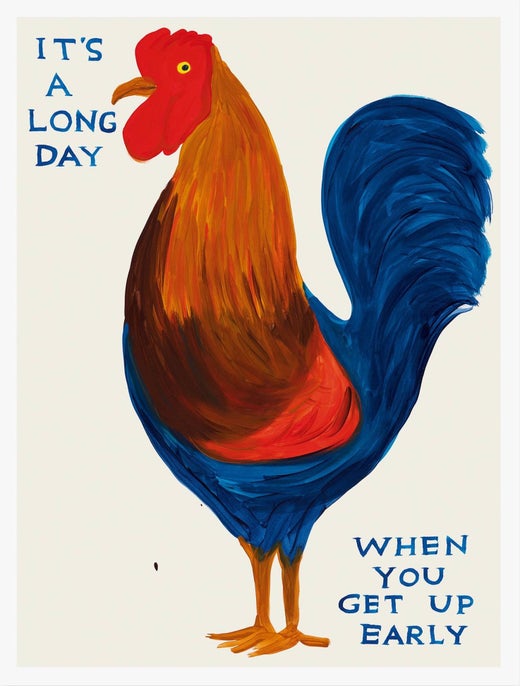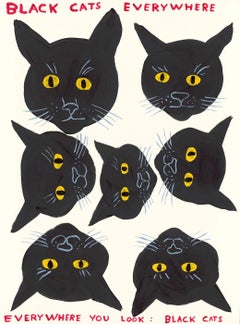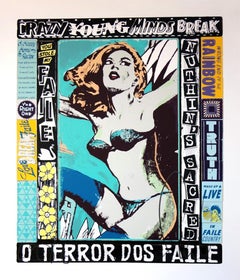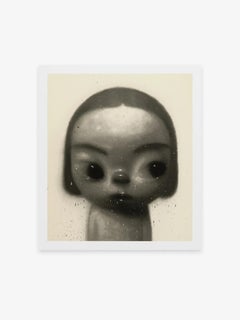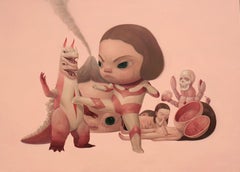David ShrigleyDAVID SHRIGLEY - BLACK CATS EVERYWHERE. Modern Design British Artist Blue2021
2021
About the Item
- Creator:David Shrigley (1968, English)
- Creation Year:2021
- Dimensions:Height: 29.53 in (75 cm)Width: 22.05 in (56 cm)
- Medium:
- Movement & Style:
- Period:
- Condition:
- Gallery Location:Madrid, ES
- Reference Number:1stDibs: LU1033116271642
David Shrigley
David Shrigley was born on September 17th, 1968, in Macclesfield, Cheshire, and grew up in Oadby, Leicestershire. He took the Art and Design Foundation course at Leicester Polytechnic in 1987, moving on to study environmental art at Glasgow School of Art in 1988, where he remained until 1991. During his studies, Shrigley worked as a gallery guide at the Centre for Contemporary Arts in Glasgow.
Shrigley has had several notable solo exhibitions for his iconic visual art, including "David Shrigley" at Dundee Contemporary Arts (2006), "Everything Must Have a Name" at the Malmo Konsthall in Sweden (2007), an exhibition at the Baltic Centre for Contemporary Art in Gateshead (2008), the Museum Ludwig in Cologne (2008), "New Powers" at the Kunsthalle Mainz in Germany (2009), the Kelvingrove Museum in Glasgow (2010) and "Animate" at the Turku Art Museum in Finland (2011).
In 2016, Shrigley’s work was part of a British Council touring exhibition. In the same month, he was showcased in the Liverpool Provocations event. Shrigley was nominated for the 2013 Turner Prize and awarded an OBE in the Queen’s New Years Honours List 2020. Shrigley is collected by the Stephen Friedman Gallery (London), Anton Kern Gallery (New York), the Museum of Modern Art (New York), the Tate (London) and the Royal Academy of Arts (London) among other institutions.
Find David Shrigley prints, sculptures and other art on 1stDIbs.
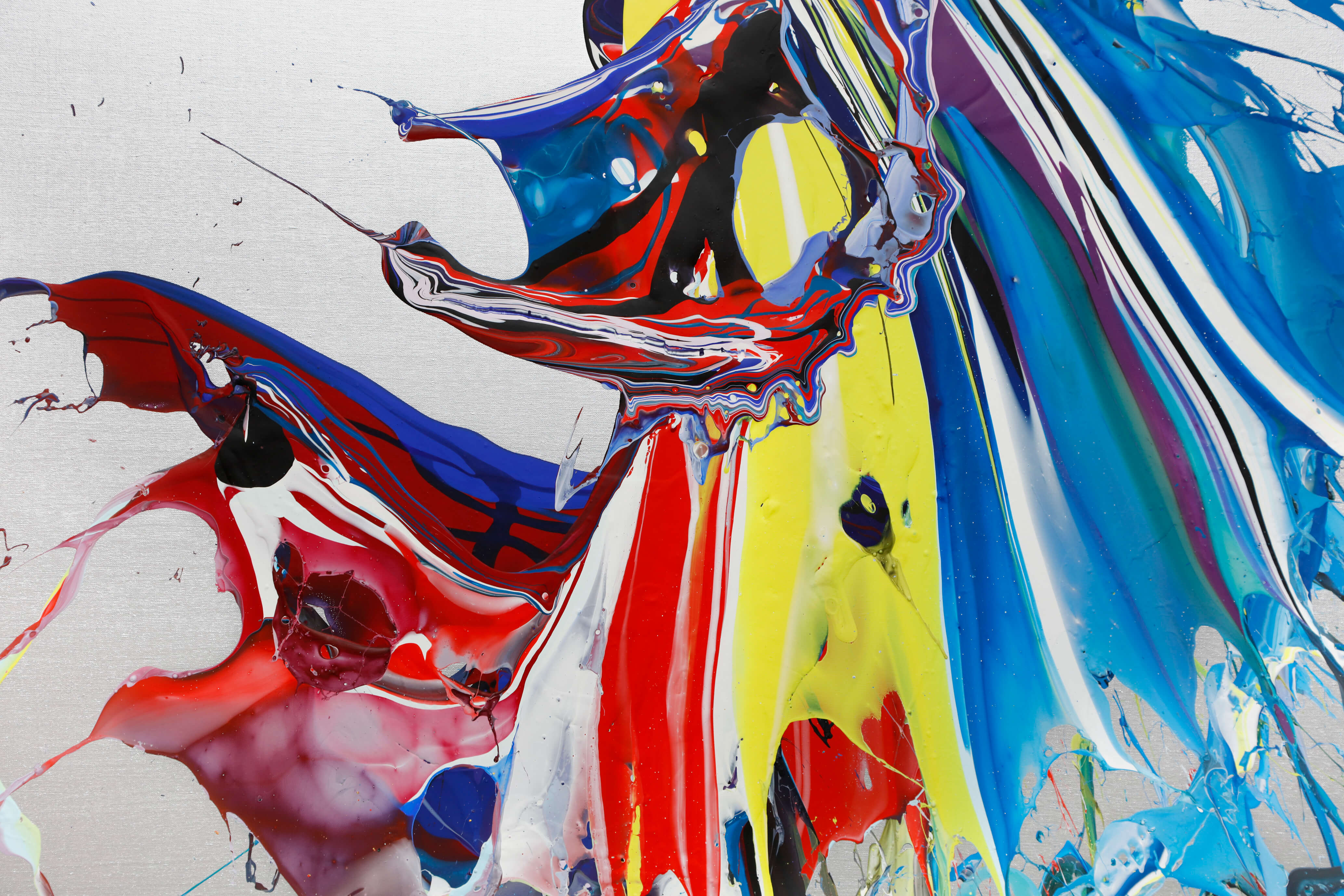
You May Also Like
1930s American Modern Figurative Prints
Paper, Screen
2010s Modern Figurative Prints
Paper, Varnish, Oil, Acrylic, Color, Giclée, Screen
1970s Modern Portrait Prints
Paper, Screen
1970s American Modern Figurative Prints
Paper, Screen
1970s Modern Prints and Multiples
Paper, Screen
1970s Modern Prints and Multiples
Paper, Screen
1970s Modern Prints and Multiples
Paper, Screen
1970s Modern Prints and Multiples
Paper, Screen
21st Century and Contemporary Modern Figurative Prints
Archival Paper, Monoprint, Screen
2010s Modern Figurative Prints
Paper, Screen
More From This Seller
View All1970s Modern Figurative Prints
Paper, Screen
2010s Modern Figurative Prints
Paper, Screen
2010s Modern Figurative Prints
Paper, Archival Ink, Screen
2010s Modern Figurative Prints
Archival Paper, Screen
2010s Modern Figurative Prints
Paper, Ink, Screen
2010s Modern Figurative Prints
Archival Paper, Screen
